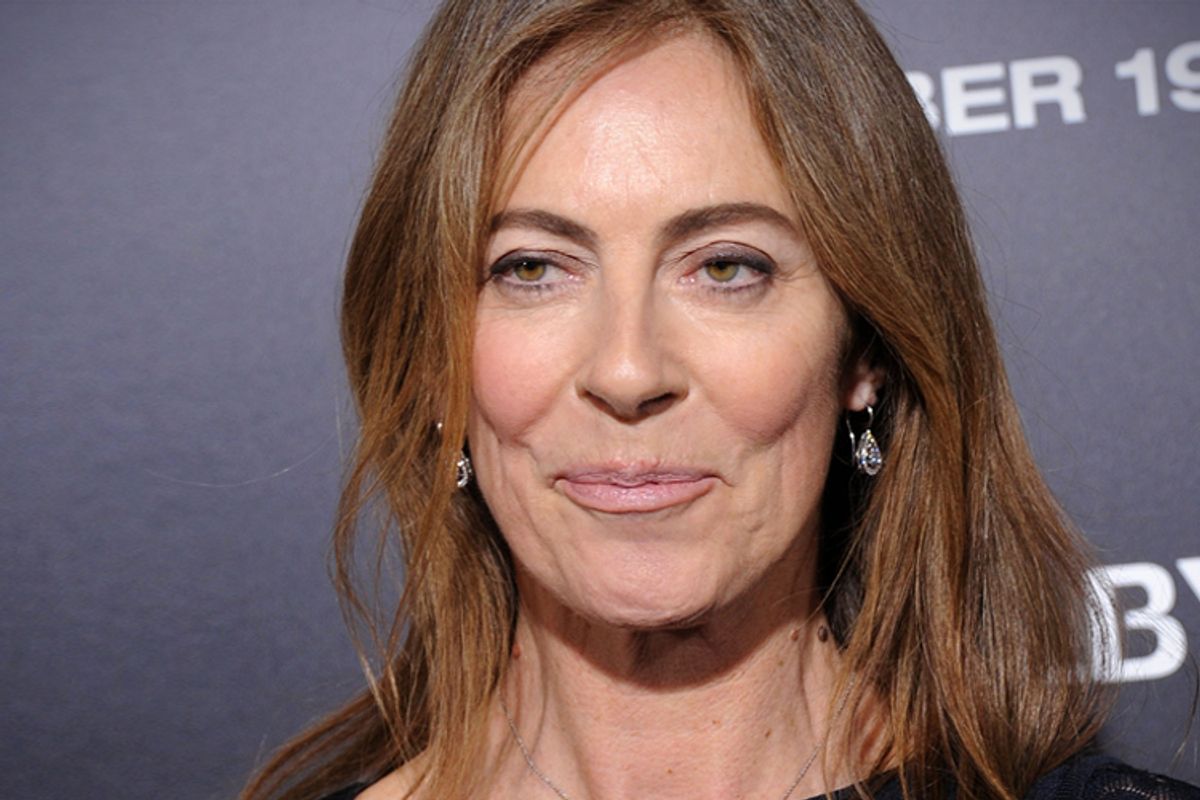It’s 2010, and the room is tight with anticipation. Barbra Streisand, a titan for gender equality in her own right, gingerly opens the envelope. Her voice becomes assertive, “Well, the time has come.”
 That night Kathryn Bigelow became the first woman to win Best Director at the Academy Awards. Her acceptance speech was modest, the words poignant. The orchestra swelled with a bouncy version of “I Am Woman” as she exited, Oscar in hand.
That night Kathryn Bigelow became the first woman to win Best Director at the Academy Awards. Her acceptance speech was modest, the words poignant. The orchestra swelled with a bouncy version of “I Am Woman” as she exited, Oscar in hand.
Bigelow’s win was a major milestone in Hollywood, where women historically—big surprise—have been shuttered into the second tier. Some predictably ignored its significance, focusing instead on the fact that her win for “The Hurt Locker” came at the expense of her ex-husband James Cameron’s “Avatar.” Others saw it as a floodgate opening, demonstrating that big-money studios can invest—soundly—in female filmmakers.
The University of Southern California’s Stacy Smith included Bigelow in her research exploring the role of women within Best Picture-nominated films. Between 2007 to 2010, 14.3 percent of directors, 12.3 percent of writers and 23.9 percent of producers were female. The good news? Female directors of nominated films had risen—between 1997 and 2006, only 3.9 percent of directors were women. The bad news? Even those higher figures are painfully low.
Advocates and researchers became curious about the “Bigelow Effect“—the idea that Bigelow’s directorial success would open the door for other women. In the paper “The Celluloid Ceiling,” San Diego State’s Martha Lauzen analyzed the employment of women in the top 260 films of 2011. The numbers painted a disappointing picture—nothing much had really changed. In 1998, women made up 17 percent of all directors, executive producers, producers, writers, cinematographers, and editors. In 2001, the figure was 19 percent. In 2011, 18 percent. The numbers were stagnant.
The number of female writers and executive producers has increased since 2010, but only by inches. For directors alone, 5 percent of all filmmakers of the top 2011 films were women. What happened to the Bigelow Effect?
The Los Angeles Times asked Melissa Silverstein, co-founder of the Athena Film Festival, the same question. She responded that directors and writers are not technically employees of movie studios, so no employment statistics regarding diversity—a visual reminder of a need for change—really exist. “If this were a Fortune 500 company and they looked at these statistics, they would have a diversity committee working on this immediately,” Silverstein remarked. “How could you have a company in the 21st century and less than 10 percent of its leaders are women?”
This year’s nominations include no female candidates for Best Director—not even Bigelow with her Best Picture-nominated “Zero Dark Thirty.” Of the writers, those in the categories of Adapted and Original Screenplay,one is a woman. Eight executive producers on the ballot are women, sharing the space with 20 men. (Encouragingly, the indie world is dramatically better at equality. In new research (pdf), Smith reported that 23.9 percent of directors at the Sundance festival between 2002 to 2012 were female, compared to the 4.4 percent figure for the 100 biggest grossing films in that same period.)
In the documentary MissRepresentation, actress Rosario Dawson speaks to the need for more women writers and for scripts that reflect raw female experience: “To really have true equality, it also means representing the women out there who sometimes aren’t the best and sometimes do make mistakes. … That’s why it’s extremely important for women to be writing their own stories.”
And on screen? Women have 32.6 percent of speaking roles in the films that win golden statues.
An increase of women behind the scenes likely would raise that number. Smith’s study found that Best Picture-nominated films with at least one female screenwriter featured more girls and women on screen than those with none. That’s 44 percent more Clarices, Violas and Junes on screen, demanding attention.
Bigelow’s Maya, in “Zero Dark Thirty,” exists and excels in an environment dominated by men. The same could be said of her director. But if Hollywood really is to be the mirror of society and driver of policy that it’s simultaneously lauded and criticized for, it has a long way to go.

Shares